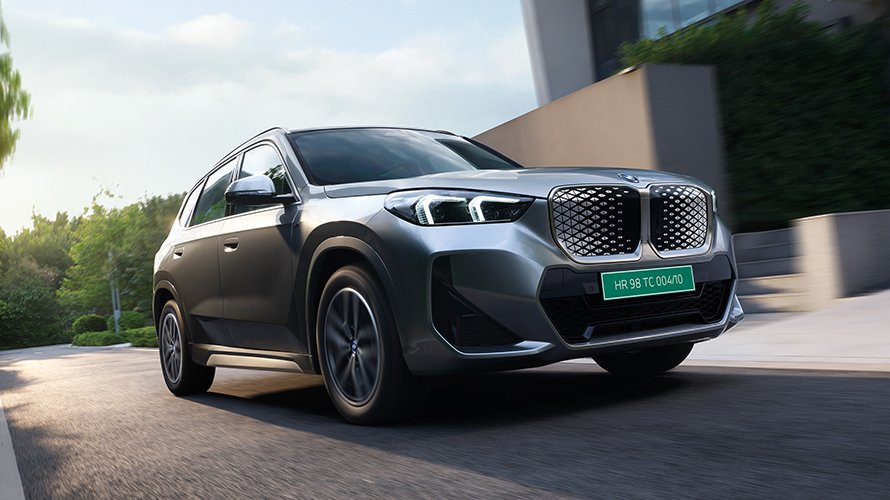Tata Motors is gearing up to bring back one of India’s most beloved SUVs, the Tata Sierra, with its electric avatar, the Sierra EV, slated for launch before the end of FY26 (March 31, 2026). The production-spec model was unveiled at the Bharat Mobility Global Expo 2025 in New Delhi, marking the return of the iconic nameplate that first captured hearts in 1991. With camouflaged prototypes spotted testing across India—from the Nilgiris to urban highways—the Sierra EV has kept enthusiasts buzzing. Tata’s EV-first strategy underscores its commitment to electrification, positioning the Sierra EV as a flagship in its ambitious plan to launch 30 new models by FY30, including seven all-new brands. Here’s a deep dive into what makes the Sierra EV a game-changer for India’s electric SUV market.
A Nostalgic Yet Futuristic Design
The Sierra EV, showcased at the Bharat Mobility Expo 2025, blends the original Sierra’s boxy charm with modern EV aesthetics. Its upright stance, large glasshouse, and retro-inspired silhouette pay homage to the 1991 model, displayed alongside it at the Expo for a nostalgic touch. Available in vibrant shades like Adman Adventure Yellow and Chill Lime, the production-spec model features flush door handles, 18-inch diamond-cut alloy wheels, and prominent “Sierra” badging on the doors. The front sports connected LED DRLs integrated into sleek headlights, a minimalist grille optimized for EV aerodynamics, and a rugged bumper hinting at off-road capability.
The side profile showcases black roof rails and body-colored B-pillars, while the rear boasts connected LED taillights and a spare wheel mount, echoing the original’s rugged appeal. Recent design patents reveal subtle refinements, including smoother B-pillars and updated alloy designs, ensuring a polished look for production. Measuring under 4.3 meters, the Sierra EV slots below the Harrier in Tata’s lineup, targeting urban adventurers and lifestyle buyers.
Inside, the Sierra EV promises a premium cabin with a triple-screen setup—a Tata first—including a 10.25-inch digital instrument cluster, a 12.3-inch infotainment touchscreen, and a front-passenger display. Spy shots reveal a minimalist dashboard inspired by the Harrier-Safari duo, featuring a 4-spoke steering wheel with an illuminated logo, ventilated seats, a panoramic sunroof, wireless charging, and ambient lighting.
Powertrain and Performance: Built for Range and Versatility
The Sierra EV is built on Tata’s Acti.ev Gen-2 platform, a modular architecture supporting rear-wheel drive (RWD) and all-wheel drive (AWD) configurations with an 800V fast-charging system. It will offer two battery options:
- 60kWh Battery: Expected to deliver 450-500km WLTP range, suitable for urban commuters and mid-range travel.
- 80kWh Battery: Aiming for 500-550km WLTP range, ideal for inter-city journeys.
Real-world range in India’s heat and traffic could be 350-450km, still competitive in the segment. The top-spec dual-motor AWD variant is projected to produce up to 390hp and 500Nm, achieving 0-100km/h in under 7 seconds. Single-motor RWD variants will prioritize efficiency, with 150-200hp for base and mid trims.
Charging capabilities include 150kW DC fast charging (10-80% in under 30 minutes) and 11kW AC charging for home use. The Sierra EV also supports vehicle-to-load (V2L) and vehicle-to-vehicle (V2V) functionality, allowing it to power external devices or charge other EVs, a feature resonating with India’s growing off-grid camping trend. Tata’s iRA connected car tech will enable OTA updates, remote diagnostics, and Arcade.ev in-car gaming for passengers.
Features and Safety: Premium and Protected
The Sierra EV is loaded with premium features, including:
- Infotainment: 12.3-inch touchscreen with wireless Apple CarPlay/Android Auto, JBL audio, and navigation.
- Comfort: Ventilated front seats, 6-way power-adjustable driver seat, panoramic sunroof, and dual-zone climate control.
- Off-Road Aids: Terrain response modes, hill descent control, and 200mm ground clearance for light off-roading.
Safety is a priority, with a target 5-star Bharat NCAP rating. Standard features include six airbags, ABS with EBD, electronic stability control (ESC), and a 360-degree camera. Level-2 ADAS—comprising adaptive cruise control, lane-keep assist, autonomous emergency braking (AEB), and blind-spot monitoring—positions it as a tech-forward SUV.
Pricing and Market Positioning
The Sierra EV is expected to start at ₹20-25 lakh (ex-showroom), with top trims nearing ₹30 lakh, undercutting premium electric SUVs like the Hyundai Ioniq 5 (₹46 lakh) and BYD Atto 3 (₹24-34 lakh). It will compete with:
- Tata Curvv EV (₹17.49-21.99 lakh): Smaller, but overlaps in base pricing.
- Mahindra XUV400 (₹15.99-19.39 lakh): More affordable, but less premium.
- MG ZS EV (₹18.98-25.08 lakh): Similar pricing, but the Sierra’s retro appeal stands out.
Tata’s 40% share in India’s EV market gives it an edge, with the Sierra EV poised to capitalize on the brand’s charging network (over 10,000 stations) and reputation for value. FAME-III subsidies could further lower on-road prices by ₹1-1.5 lakh.
Production and Launch Timeline
The Sierra EV will roll out from Tata’s Pune facility, with production already scaling up alongside the Curvv and Harrier EVs. Camouflaged test mules, spotted in June-July 2025 across Tamil Nadu and Maharashtra, confirm rigorous validation for India’s diverse conditions. The Bharat Mobility Expo showcase, attended by industry leaders and enthusiasts, suggests a festive season launch around Diwali 2025 (October-November) to maximize sales momentum.
Social media on X is abuzz, with users praising the Sierra’s retro-modern look and speculating on a sub-₹20 lakh base price for early adoption. Posts highlight its potential to rival the Mahindra Thar Roxx in style, though some express concerns over charging infrastructure in Tier-2/3 cities.
Challenges and Opportunities
Opportunities:
- EV Push: India’s EV penetration is projected to hit 30% by 2030, with government support for charging (100,000 stations targeted by 2027) favoring the Sierra EV.
- Brand Loyalty: Tata’s EV leadership and Sierra’s nostalgic appeal could drive bookings, especially among millennials and Gen-Z.
- Export Potential: Right-hand-drive markets like ASEAN and Africa could boost volumes from Pune.
Challenges:
- Infrastructure Gaps: Limited fast-charging outside metros may deter buyers, despite Tata’s network expansion.
- Competition: Affordable EVs like the MG Comet and premium players like the Ioniq 5 create a crowded segment.
- Pricing Perception: At ₹20 lakh+, it must justify the premium over ICE SUVs like the Creta (₹11-20 lakh).
Conclusion: An Electric Icon Reborn
The Tata Sierra EV, launching before March 31, 2026, marks a bold step in Tata Motors’ electrification journey. Unveiled at Bharat Mobility Global Expo 2025, it fuses retro charm with cutting-edge EV tech, offering 450-550km range, Level-2 ADAS, and a premium cabin. As test mules crisscross India and buzz grows on X, the Sierra EV is set to redefine the compact electric SUV segment, blending heritage with sustainability. With Tata’s EV dominance and a festive launch on>the horizon, the Sierra EV isn’t just a comeback—it’s a statement for India’s electric future.



